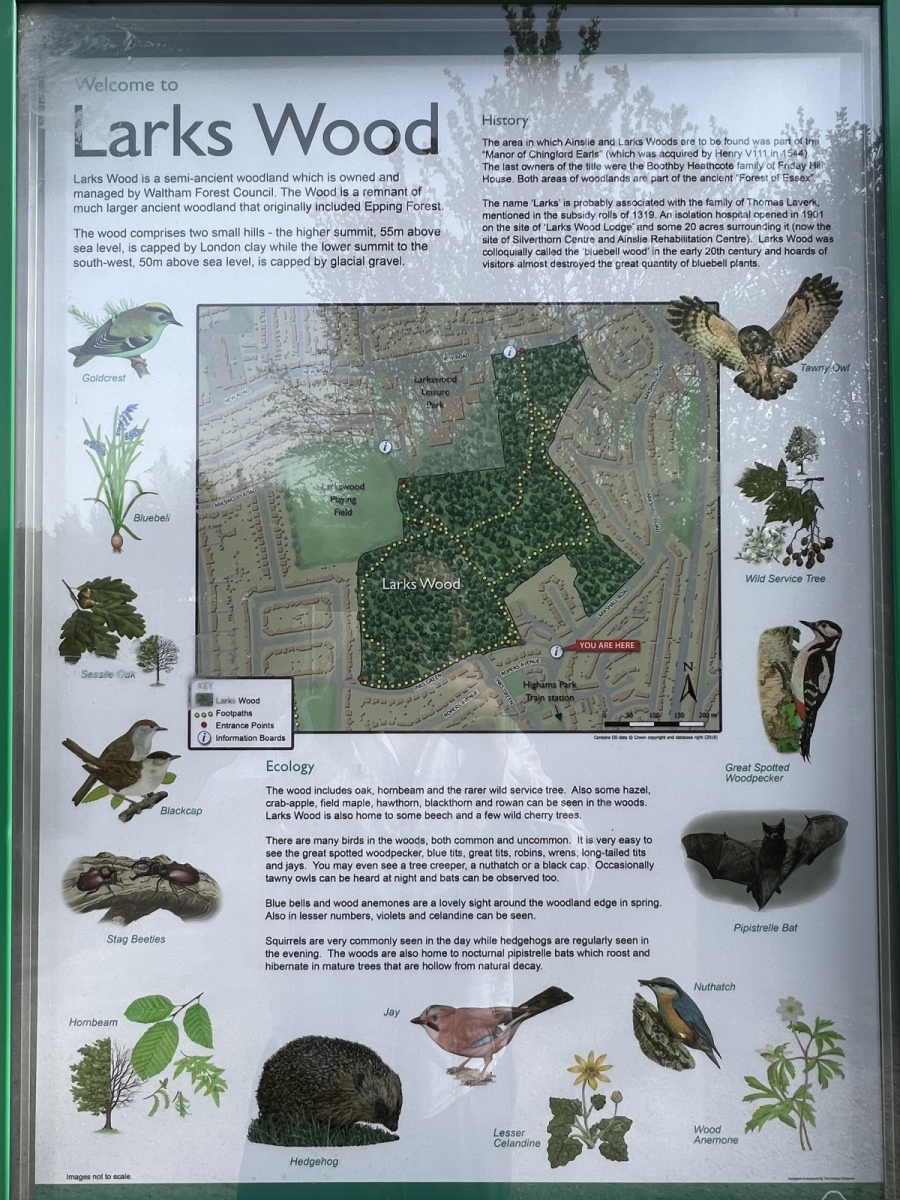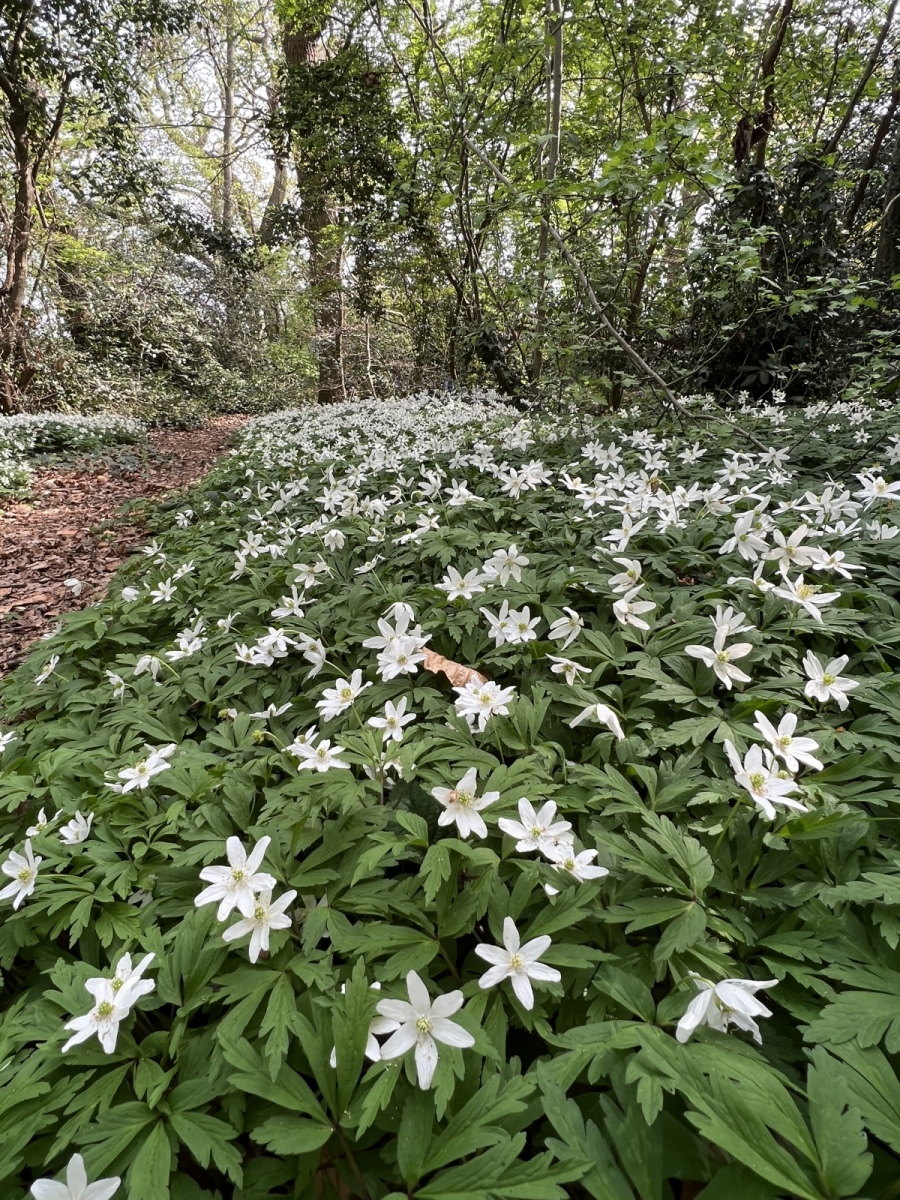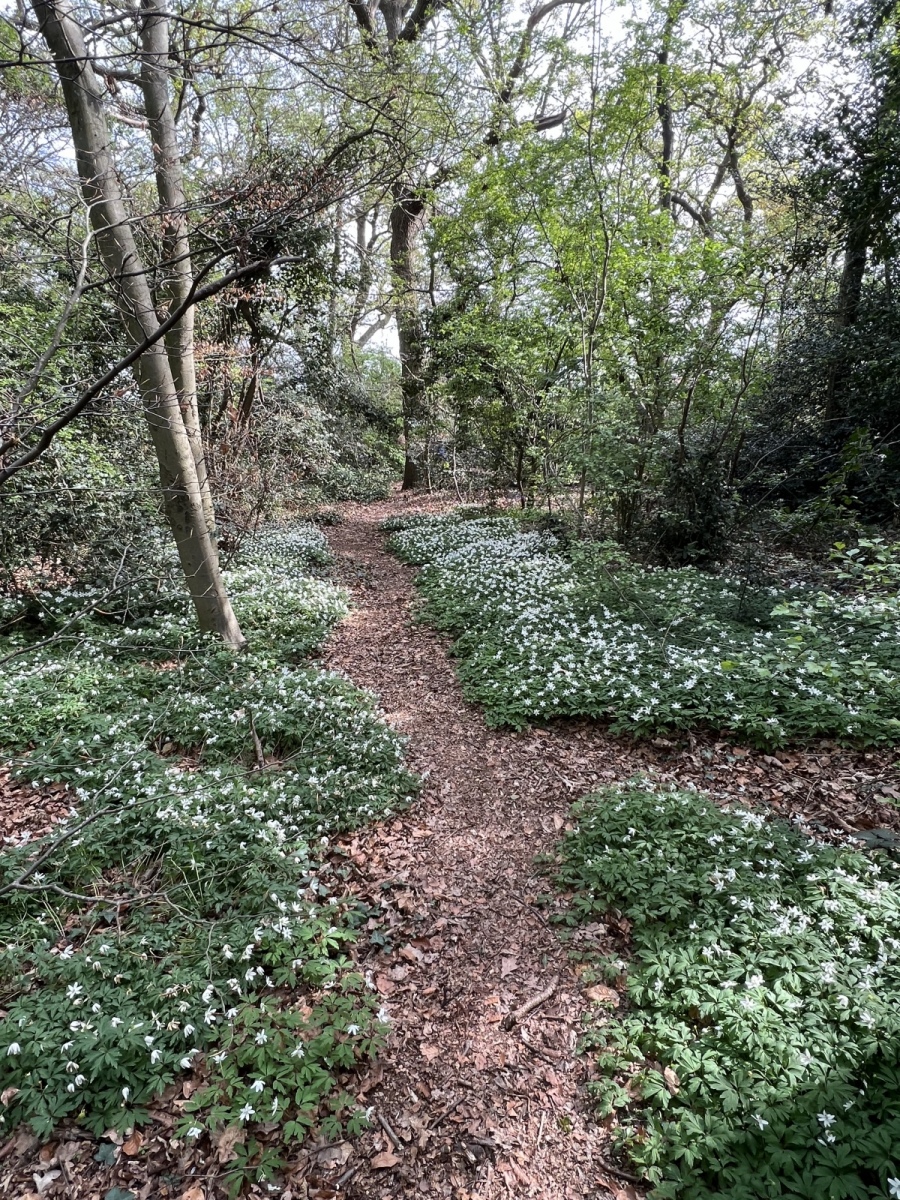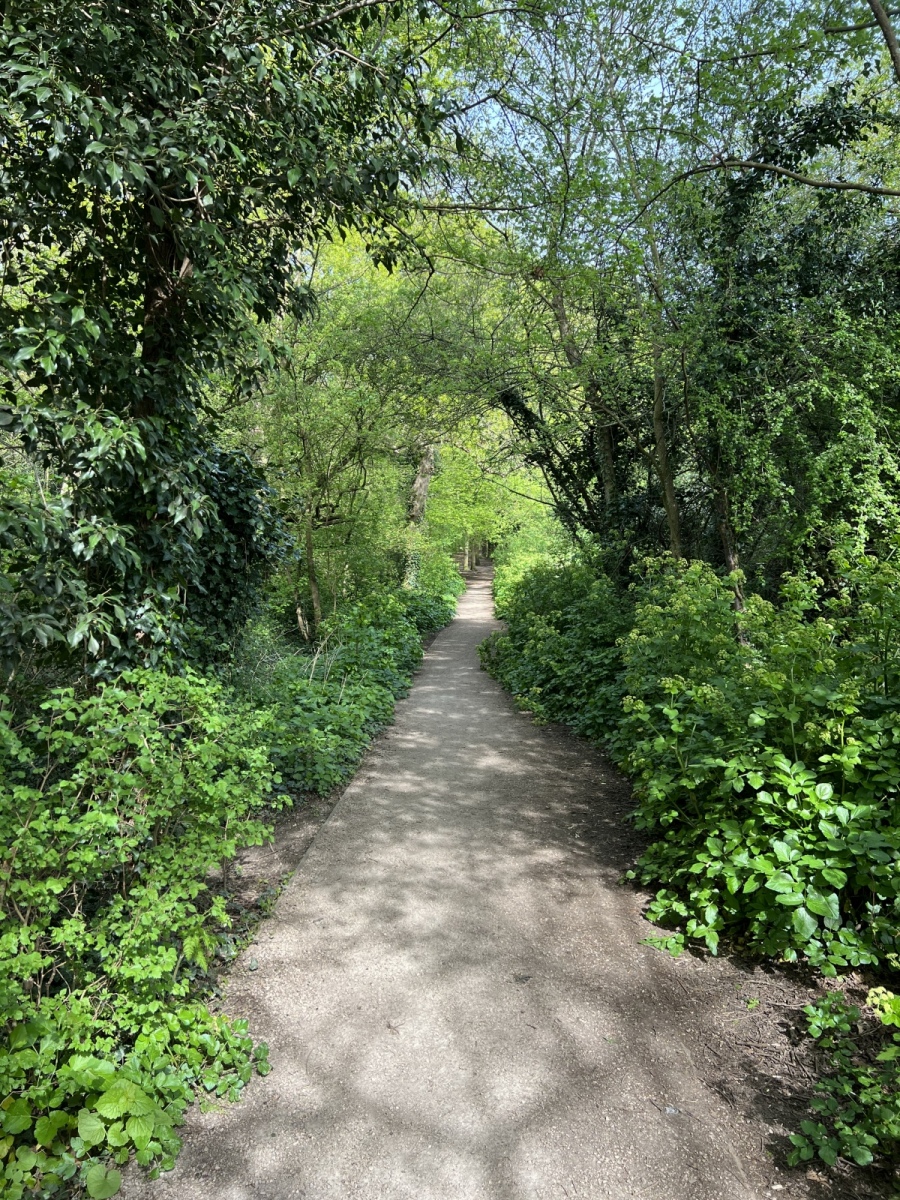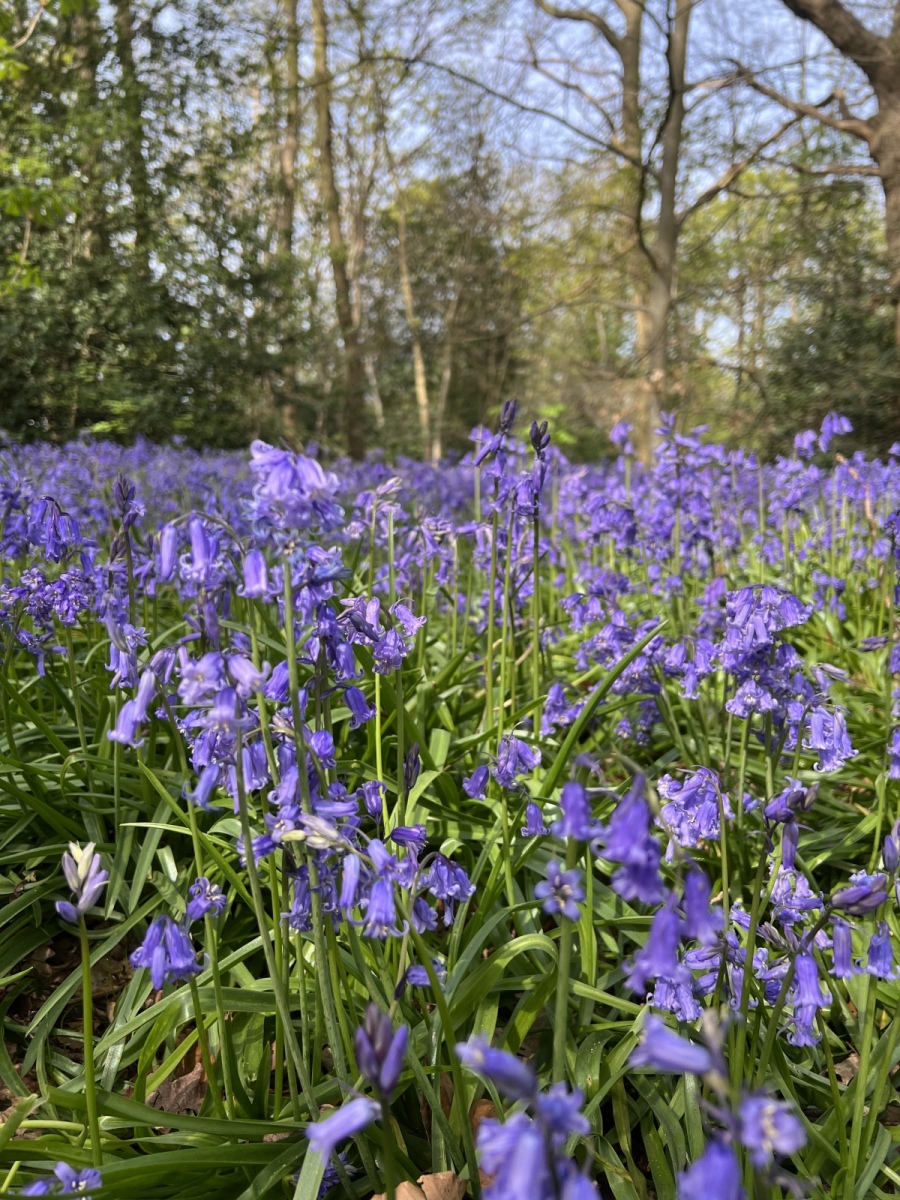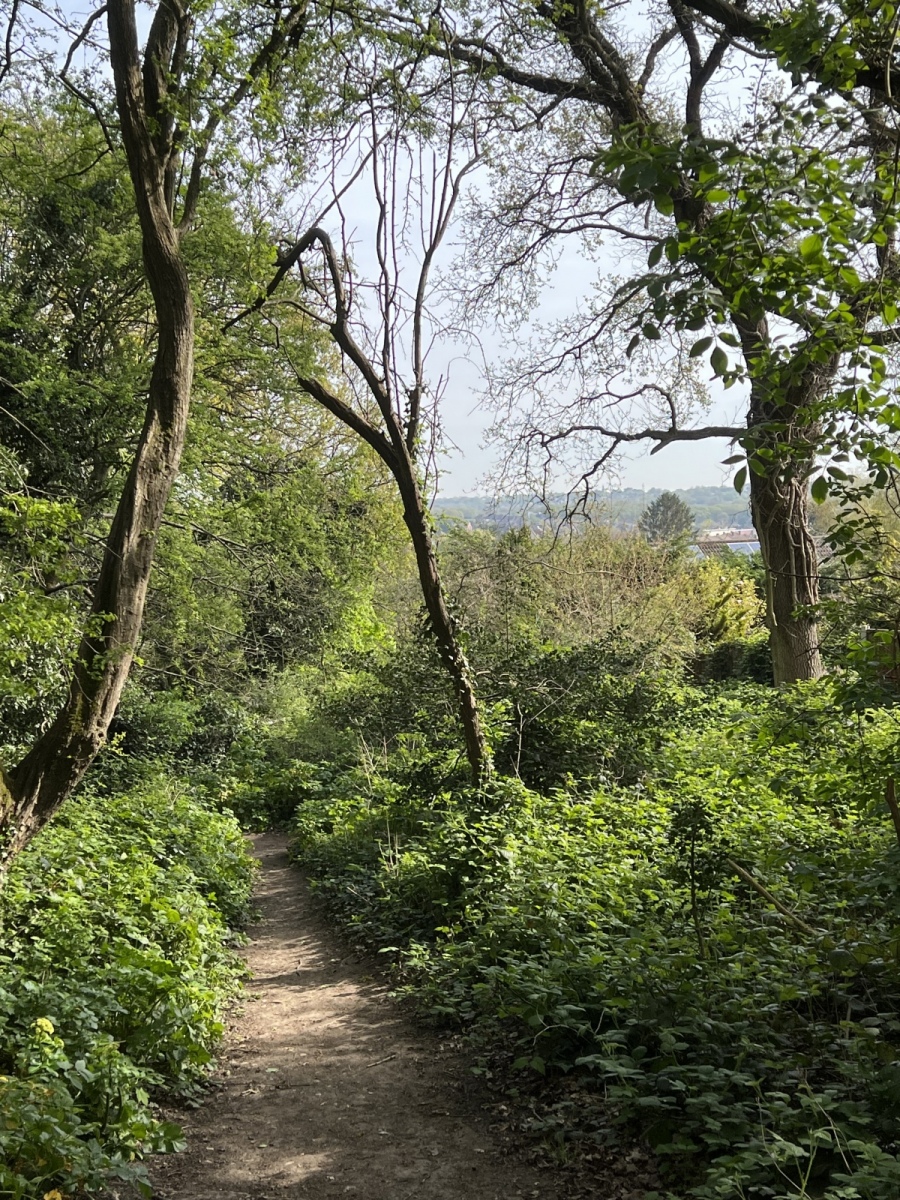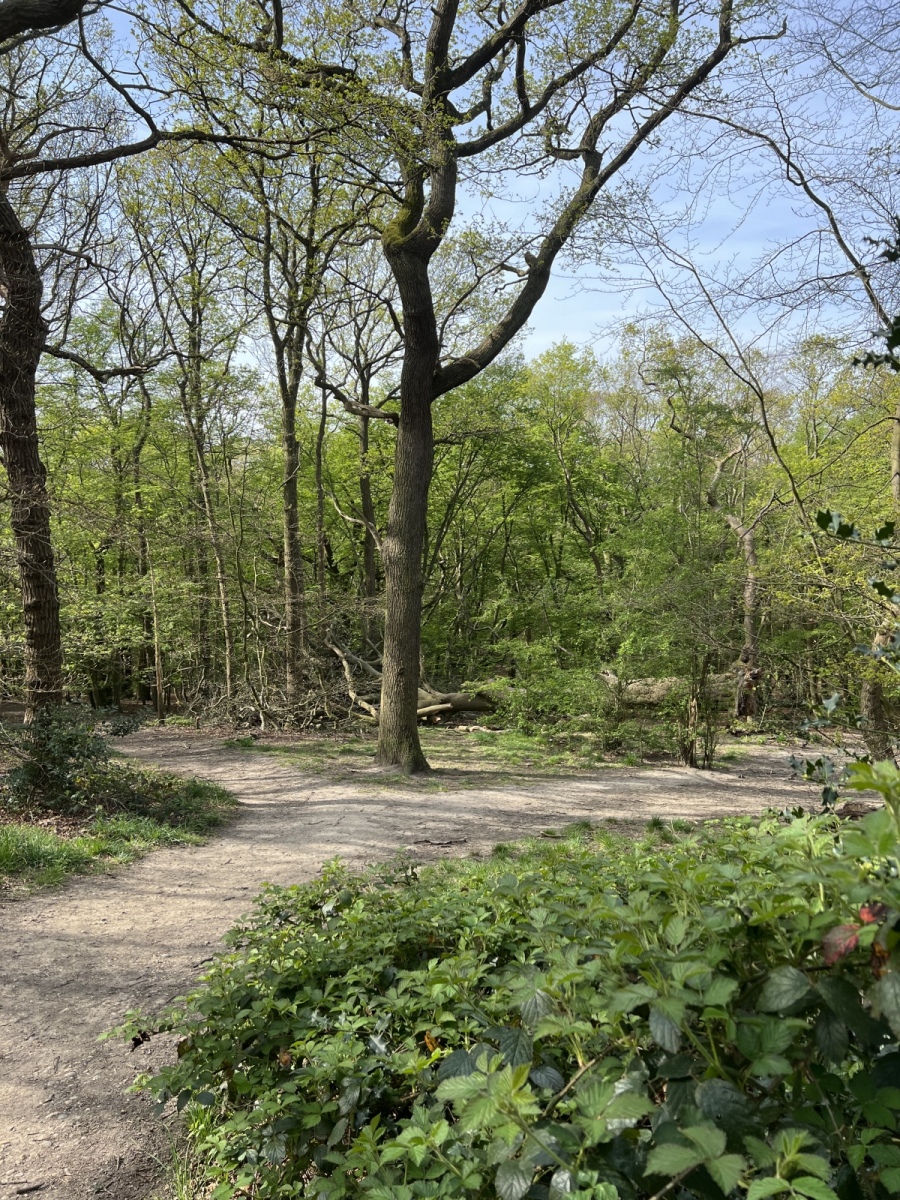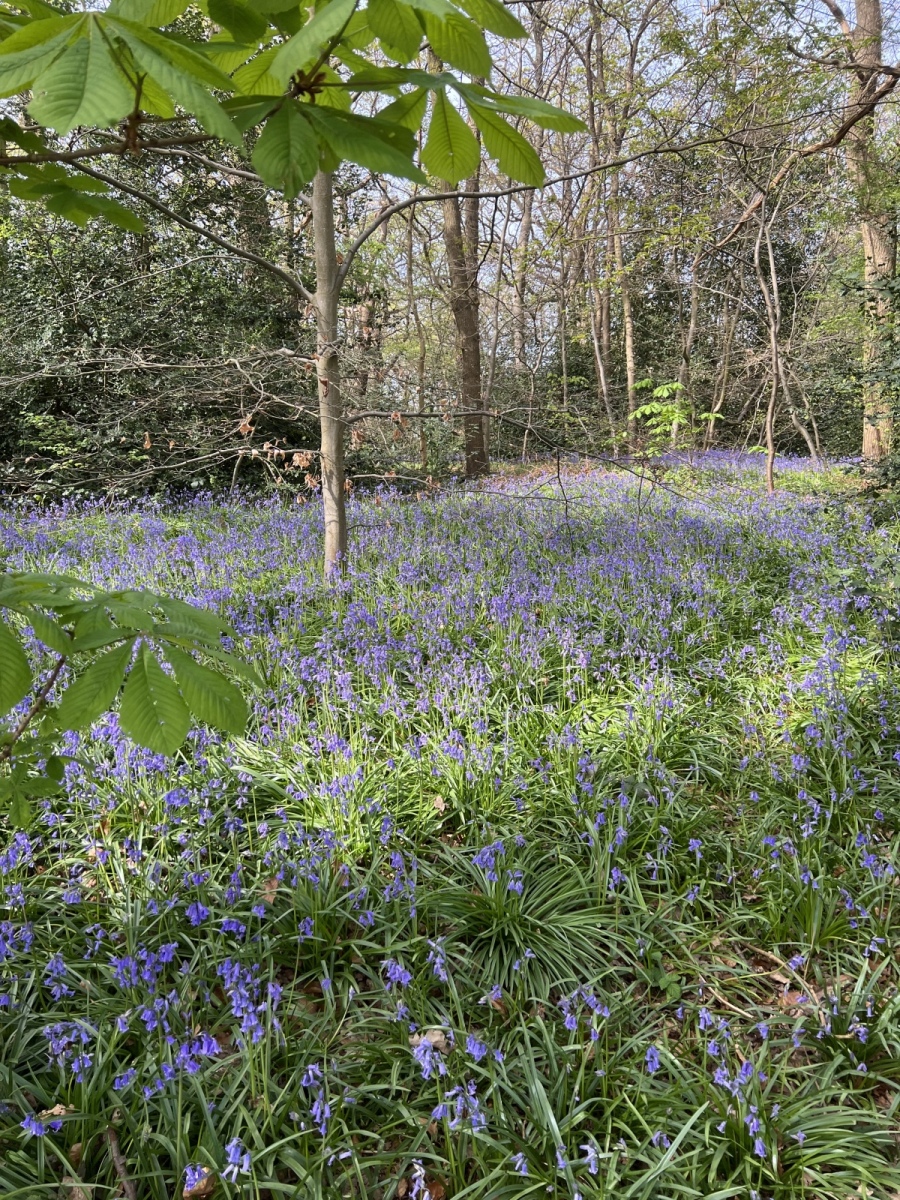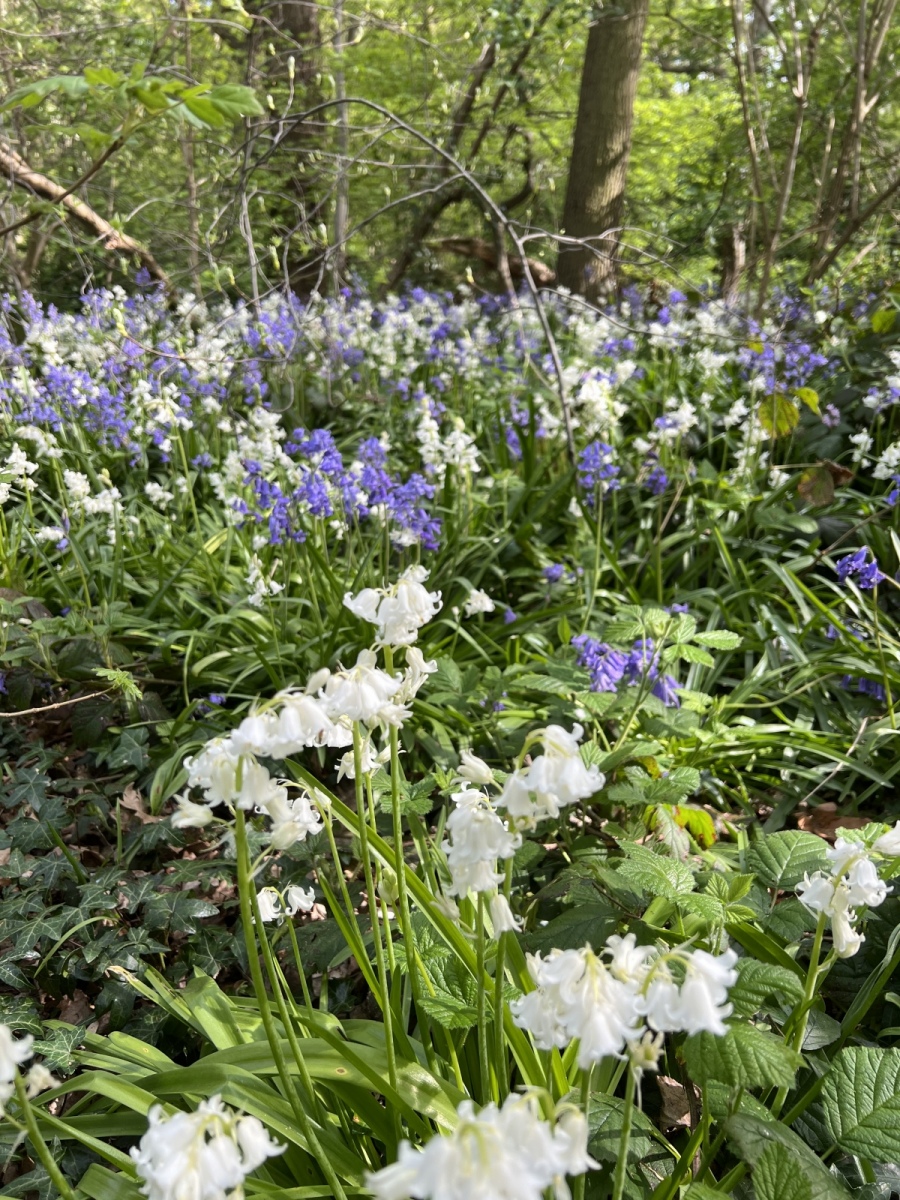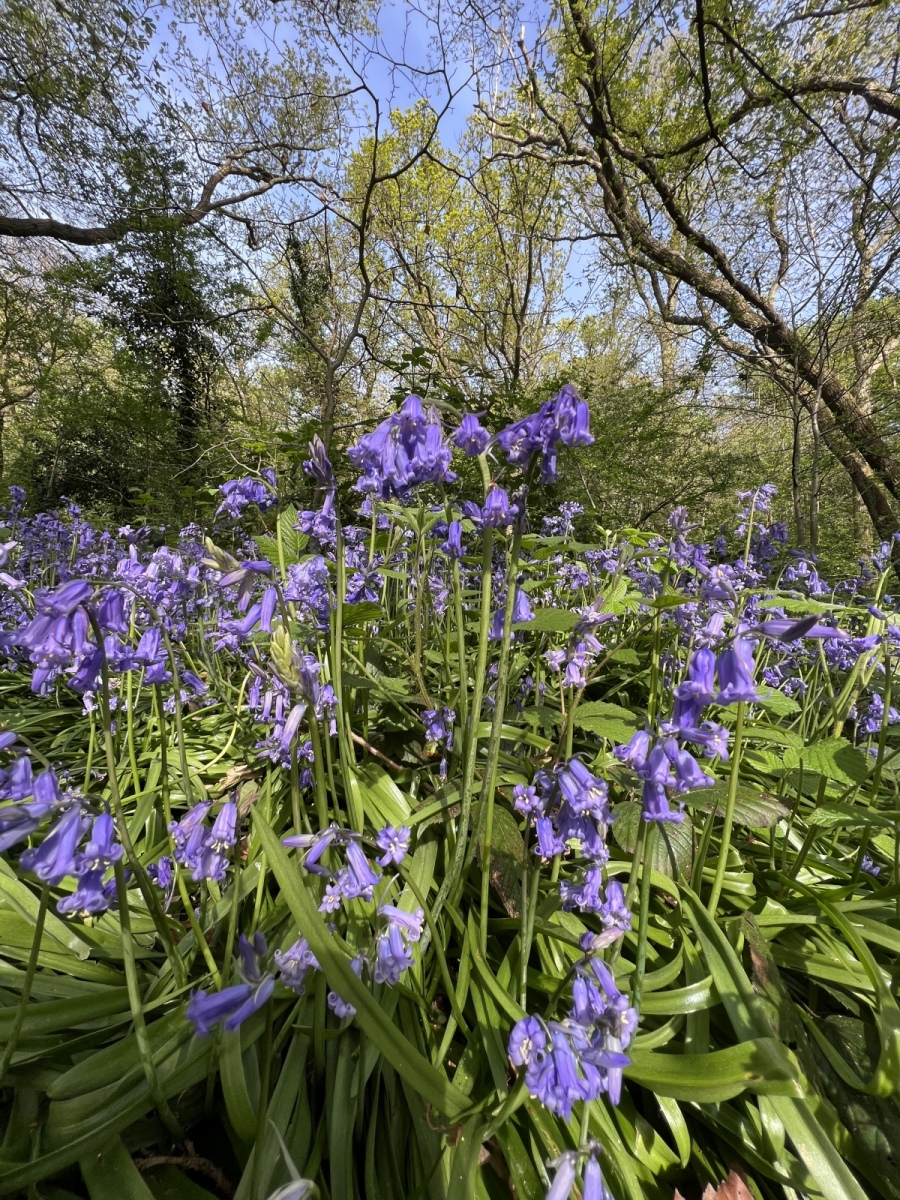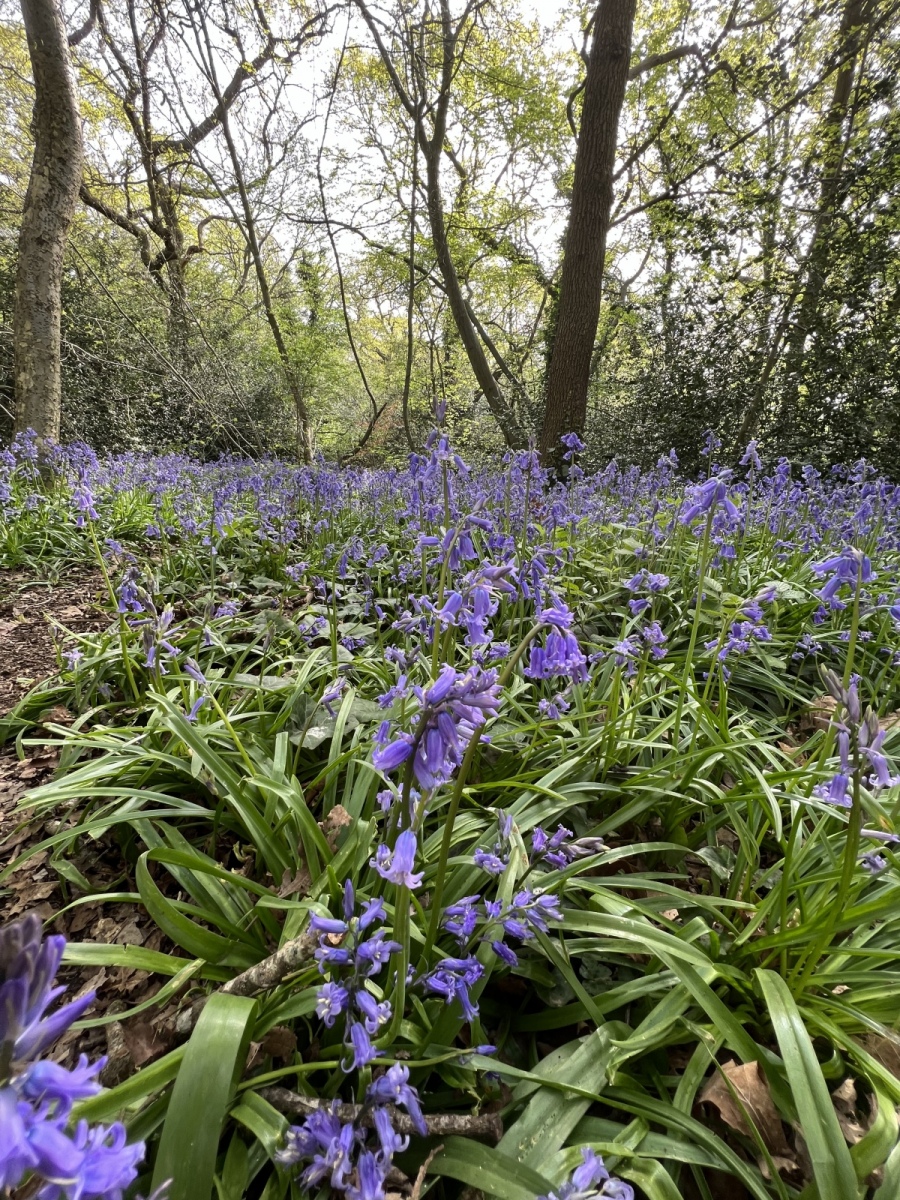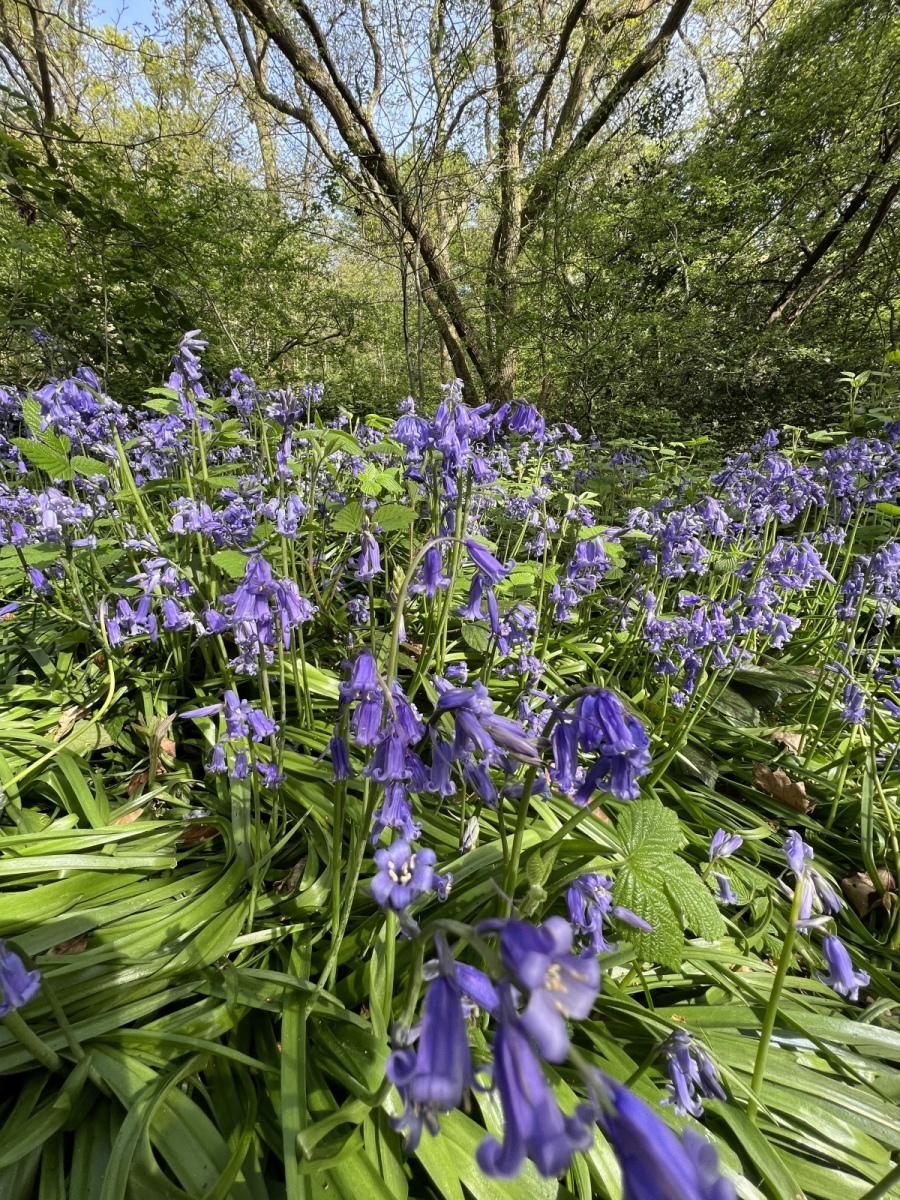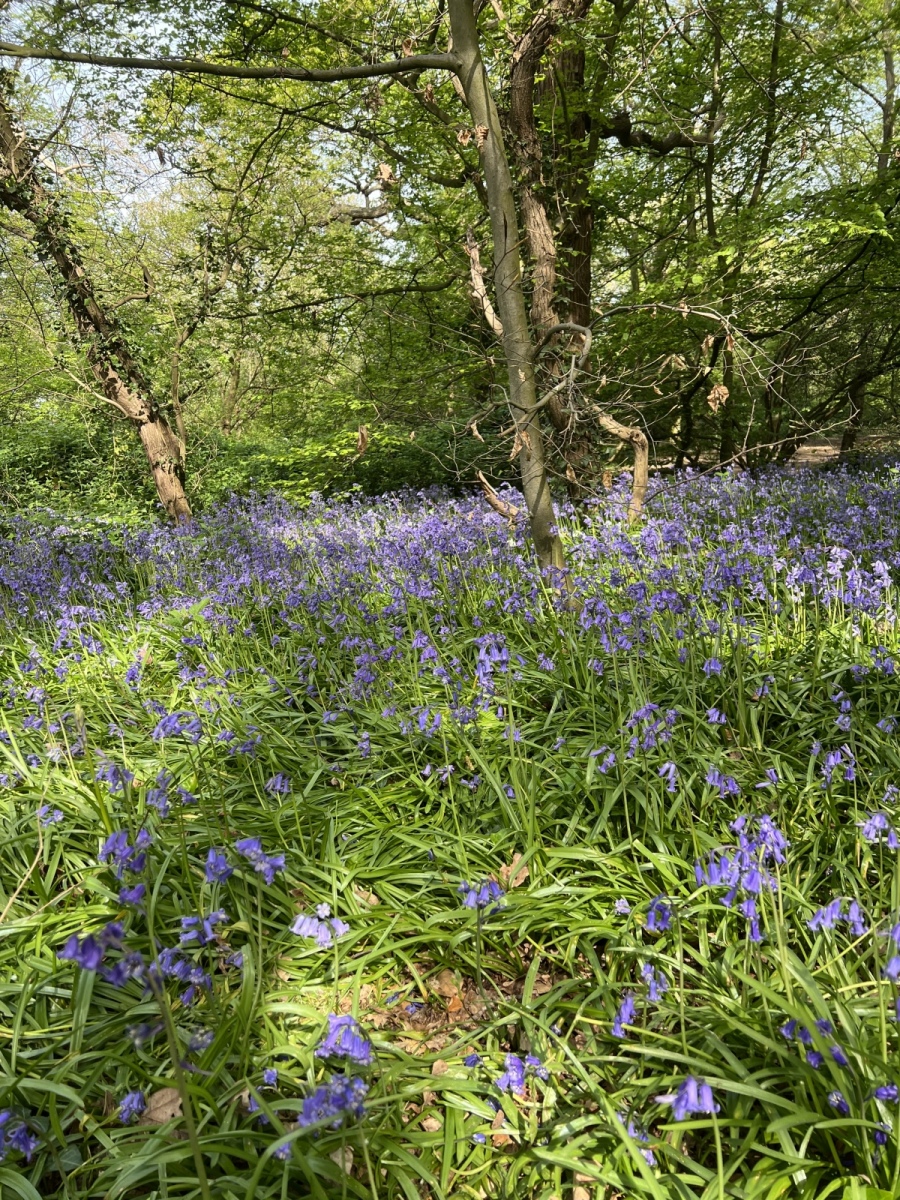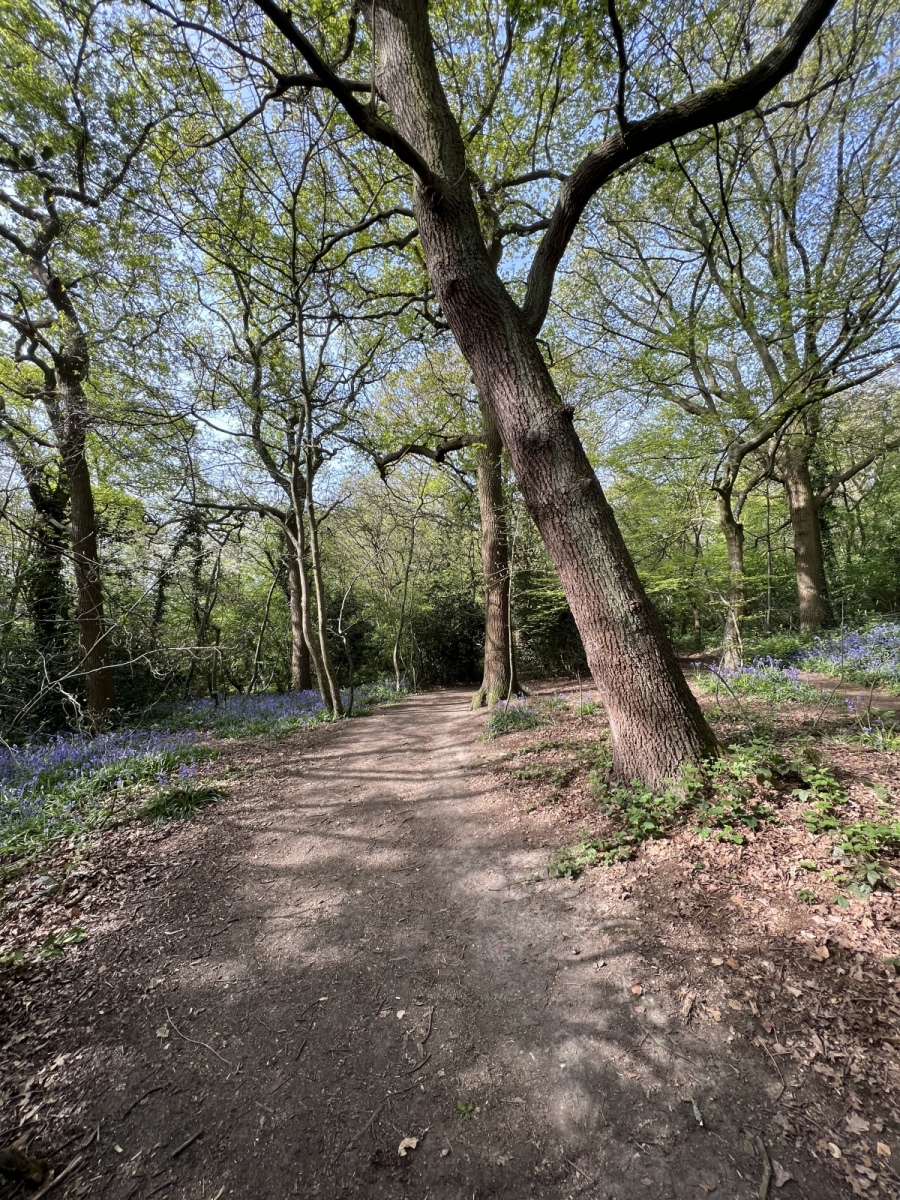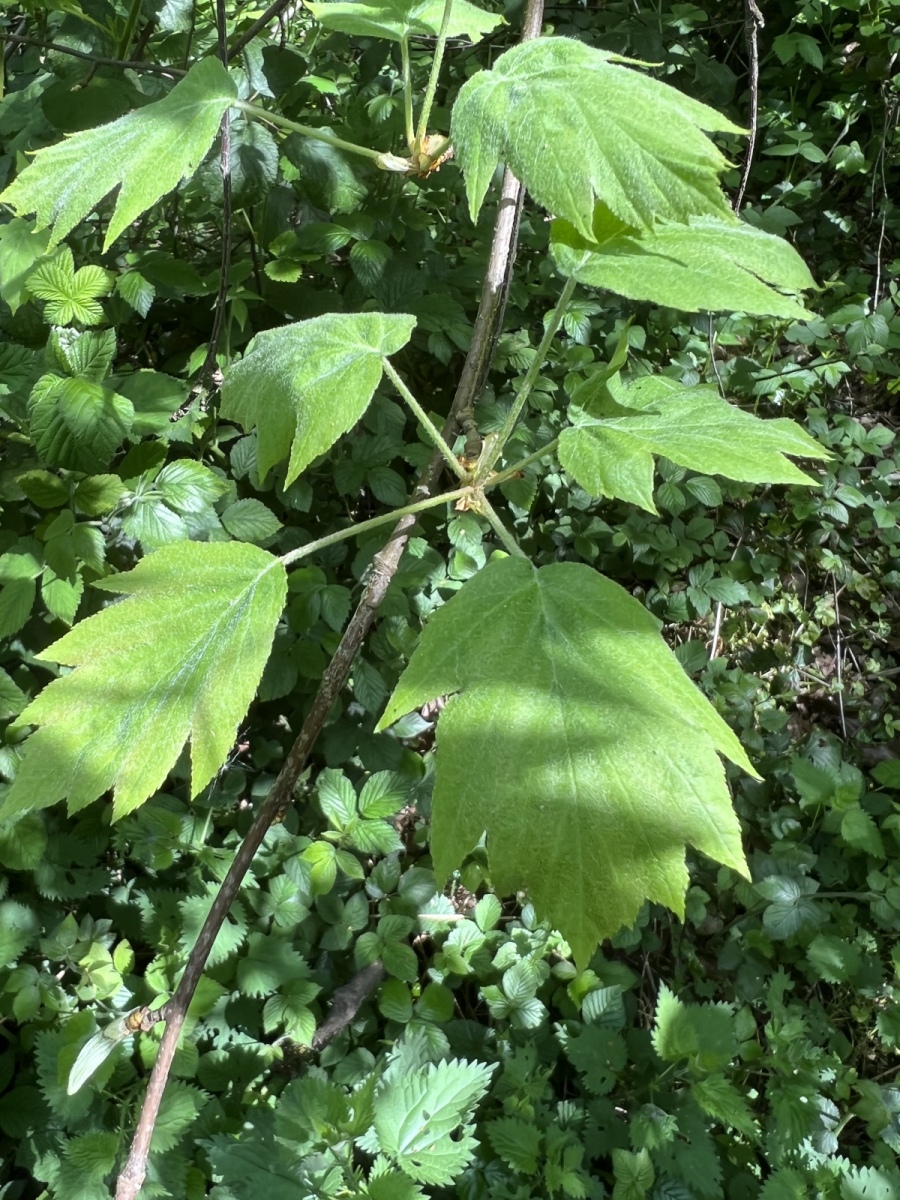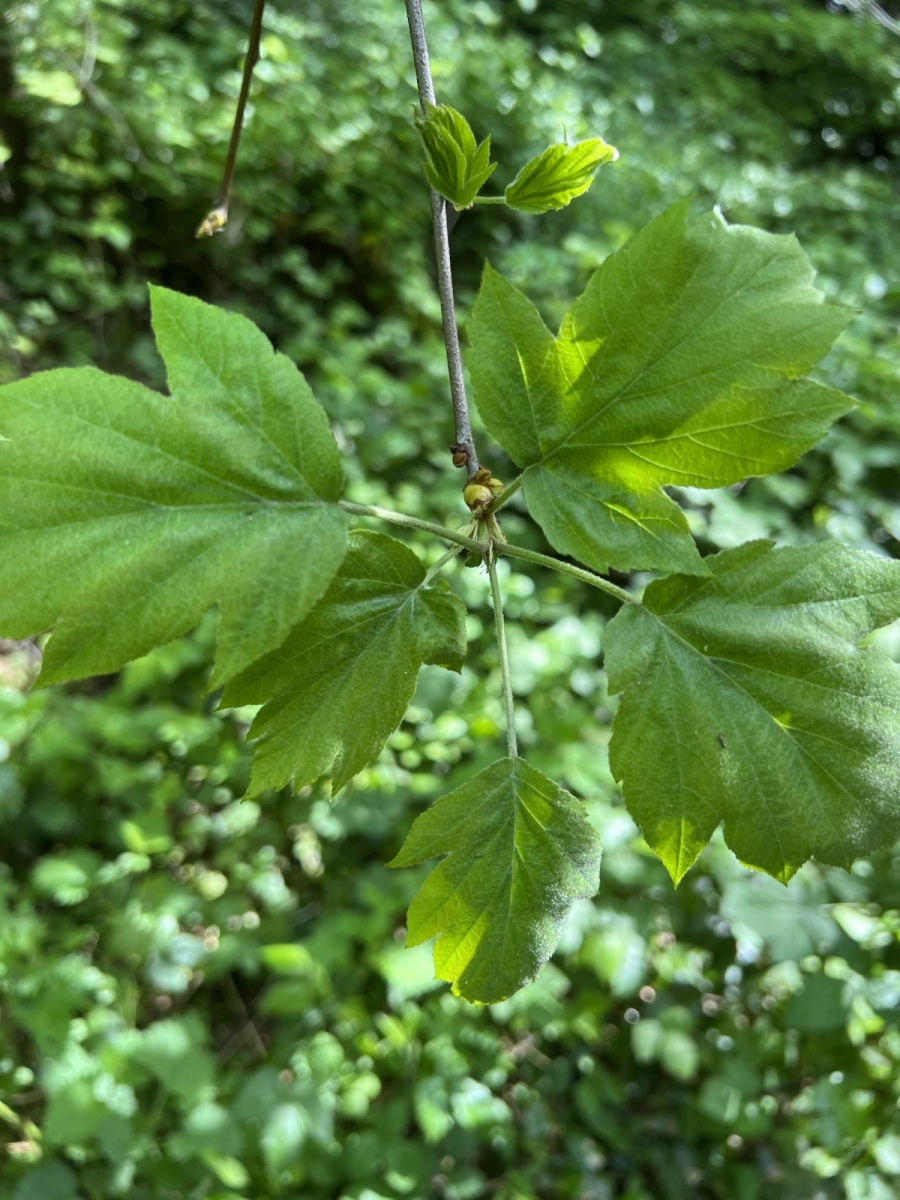
Larks Wood sits upon two adjacent hills forming a large area of woodland in south east Chingford with Ainslie Wood forming a smaller wooded area a short distance away, these were once both connected. Like Knighton Wood in Buckhurst Hill this is a fragment of the great forest of Essex, cut off from the main body of the forest and landlocked by residential development. The Chapman and Andre map of Essex shows that Larks Hill Wood was already separated from the main body of Epping forest in 1777 and had been for a considerable amount of time beforehand, Knighton Wood however was still very much part of the main forest at this time. Historic records suggest there was likely to be Saxon activity to the south west nearer to the river Lea where stilted houses built on marshland were discovered during excavations. The manor was still relatively well wooded in the 11th century which is reflected by entries in the Doomsday Book showing an unusually high number of Swine being turned out here. Further entries in the Doomsday Book mention an established settlement in the Hale End area. Woodland was being cleared to create pasture in the east of the manor during the 12th and 13th centuries with further clearances to the north. Much of this part of Chingford was referred to as arable, marsh and pasture land. The topography here may explain why Larks Wood and Ainslie Wood escaped clearance and became isolated very early on as steep hills would not have made this favourable as farmland.
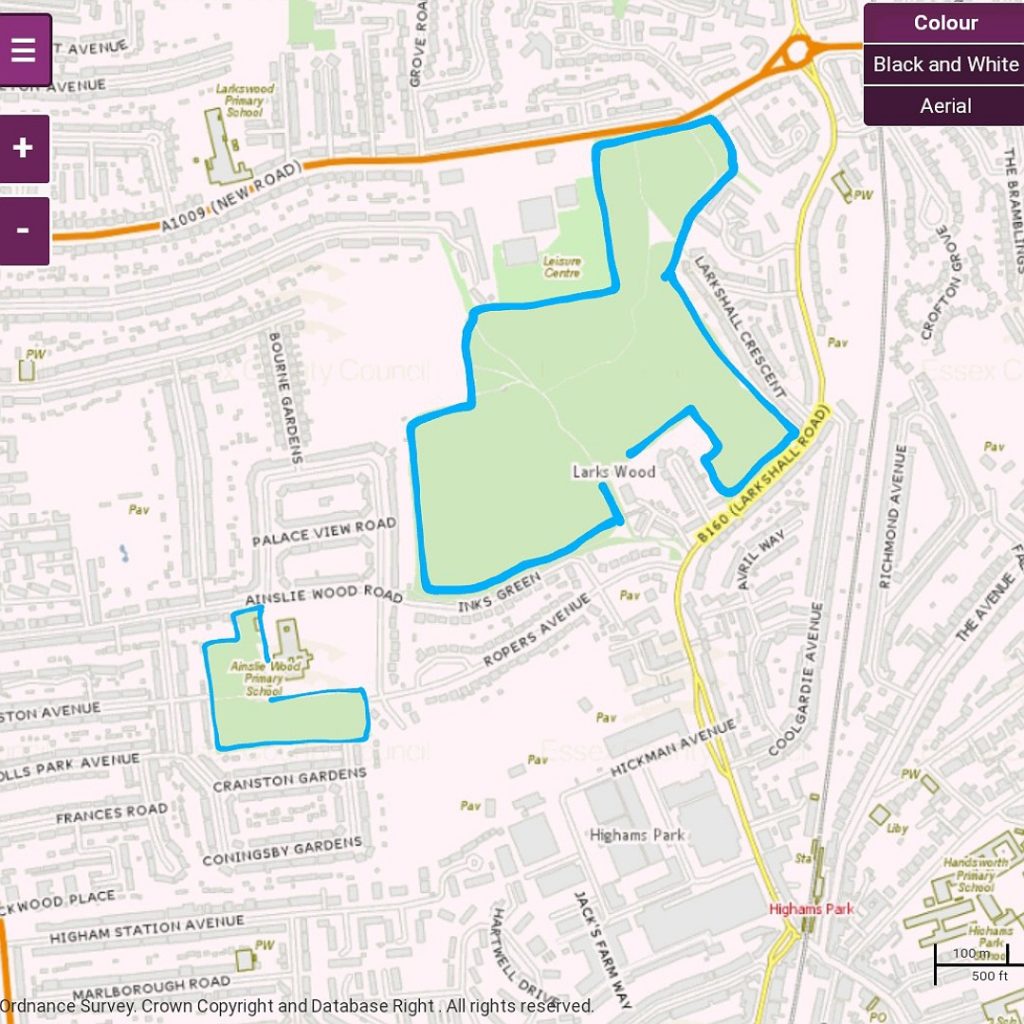
This is ancient and semi ancient woodland with some very interesting features. The land occupied by Larks Wood is a very hilly area in an otherwise low lying location. The southernmost hill appears on ordnance survey maps rather evocatively as ‘Moon Hill’. Traditional woodland management here appears different to what we would expect elsewhere. Throughout the main forest and its isolated remnants pollarded trees are almost always present but here coppice is the predominant ancient management method. This was an older technique from before Deer were introduced. Landowners quickly realised that coppicing made new growth fair game to browsing herbivores, which gave rise to the development of pollarding to ensure any new growth was kept above head height and out of the reach of foraging Deer. This finding suggests that the extent of deforestation in the manor (by 1640 there was little more remaining woodland here than today) had displaced the Deer enough that pollarding was not necessary at this remaining pocket of woodland.
Once a part of the ancient manor of Chingford Earls, over the centuries these two areas of woodland acquired a number of different names. Ainslie Wood is named in reference to previous owner Sir Robert Sharpe Ainslie formerly of The Rolls, Inks Green (Rolls Court exists today) who owned land here. Before Sir Robert Sharpe Ainslie, the Boothby Heathcote family formerly of Friday Hill House owned land in this part of the manor. Ainslie Wood has also been known by the names of Endsleigh Wood, St John’s Wood and Little Larks. This was privately owned until the London Borough of Waltham Forest took over its management. Neighbouring Larks Wood was once owned by dairy farmer Mr Charles Roper (Ropers Avenue exists today), who owned land elsewhere in Highams Park and Hale End at a time when dairy farming was well established in the area. The name Larks is believed to be linked to the Laverk family who appear in subsidy records from the area in 1319. Apart from the separation of these two woodlands by residential development in the early 20th century, historic maps spanning several hundred years show surprisingly little difference in their shape or scale since they were isolated from the main forest.
In 1936 Larks Wood and the neighbouring former Larks Farm were opened as a park by Chingford Borough Council which included playing fields and an open air Lido on the site of the former farm. Hundreds of people once visited in huge crowds in the spring to view the Bluebells at Larks Wood which almost resulted in their complete destruction. Today the park and woods are managed by the London Borough of Waltham Forest with the Friends of Ainslie and Larks Woods group which formed in December 2004. A number of ancient woodland indicator species can be found here, Wild Service Tree have been recorded in both woods and these are an extremely scarce tree species in England and Wales. The most impressive species in addition to the carpets of Bluebells are the large banks of Wood Anemone which may be many centuries old. These are notoriously slow growing woodland plants and can take up to a hundred years to spread just six feet, which would put some of the vast clumps growing in these woodlands in the veteran plant category.
Ainslie Wood may be the smaller of the two woodlands but what it lacks in size it more than compensates for in the abundance of species it supports. Large plantations of Bluebells and Wood Anemone can be found here as in Larks Wood, but the best kept secret is one of the rarest native UK tree species which has been phenomenally successful here. Wild Service Tree (Sorbus Torminalis) is one of our most scarce native trees. To give an idea of just how rare these trees are in the district there is believed to be only one known specimen on the Lambourne estate east of the M11 and another grows on Fairmead Plain in Epping forest. One other remote location deep in Epping forest supports a large group of these trees, elsewhere they are few and far between and usually found growing in isolation. At Ainslie Wood there are quite literally dozens of these trees practically everywhere you look, a number of which are clearly very old. These are considered a reliable indicator of ancient woodland because they only occur where there has been a continuous cover of woodland over many hundreds and sometimes even thousands of years. If you are lucky enough to find just one of these trees on your travels you can be sure you are standing in a very special and ancient place, to find this many in one small location is incredibly unusual and does not occur often.
In the spring Larks Wood puts on a stunning display of Bluebells which easily gives other local Bluebell woods a good run for their money and continues to attract hundreds of visitors to the site each year. These are concentrated mostly around the edges of the woods and interspersed with some incredibly large banks of Wood Anemone giving a real visual treat. From almost any entrance blue mists of colour can be seen through the trees which guide visitors around the woods along the many pathways. It would not be an overstatement to say these woodlands are among some of the finest Bluebell woods in the area and a visit here in spring is highly recommended. Closer inspection of the trees here reveals interesting insights into how these woodlands were managed differently in isolation to the forest with coppiced Hornbeam an obvious feature which give the location a very unique feel, this has also clearly been of great benefit to the light hungry flowering species which depend on maximum daylight reaching the woodland floor early in the year.
These woods both make a pleasant and enjoyable place to visit at any time of year but Larks Wood is an absolute must when the breathtaking displays of beautiful Bluebells and ancient Wood Anemone burst into life heralding the arrival of spring. These can also be found growing in good numbers at Ainslie Wood, which is a smaller but wonderfully peaceful and secluded woodland. Ainslie Wood can be accessed from the bottom of Ropers Avenue, Woodside Gardens or from Royston Avenue. This rare and unique habitat is managed as a nature reserve. For Larks Wood parking can be found in most surrounding roads which as always should be done with consideration for local residents and entrances can be found in numerous places around the edge of the woods along Larkshall Road and New Road or via the playing fields. Once inside Larks Wood there are multiple pathways and tracks going off in all directions to explore these two interconnected wooded hills, cast adrift from the once great forest of Essex and now forming a delightful oasis of calm in suburban Chingford.
Further reading from external sources:

